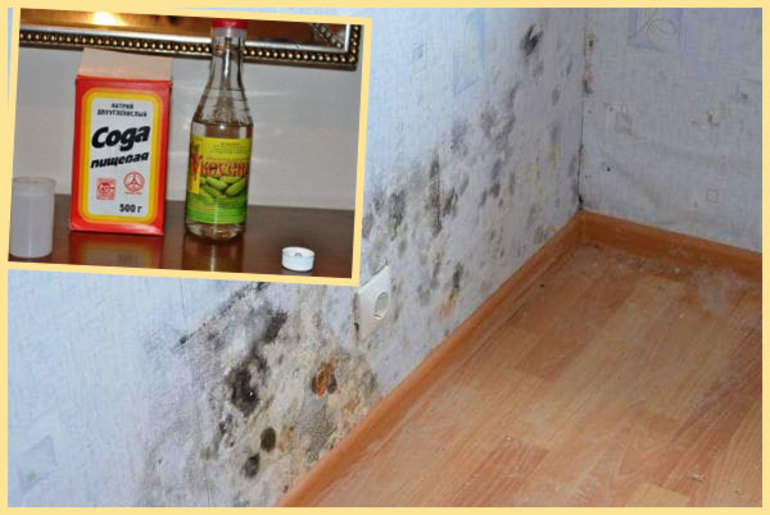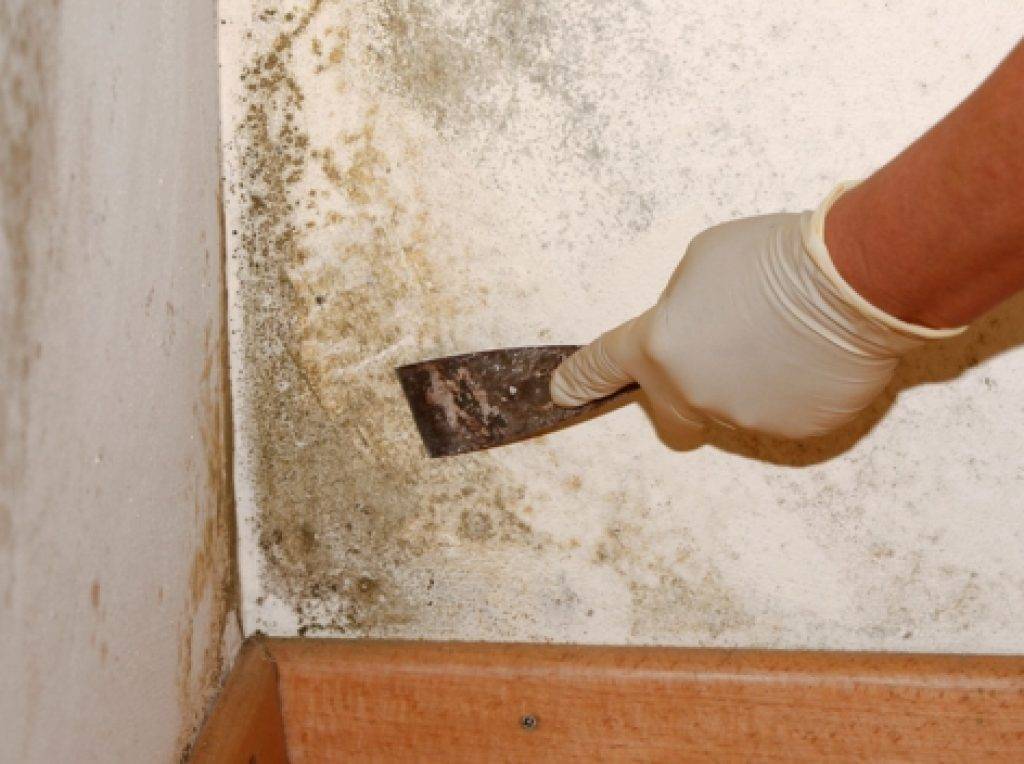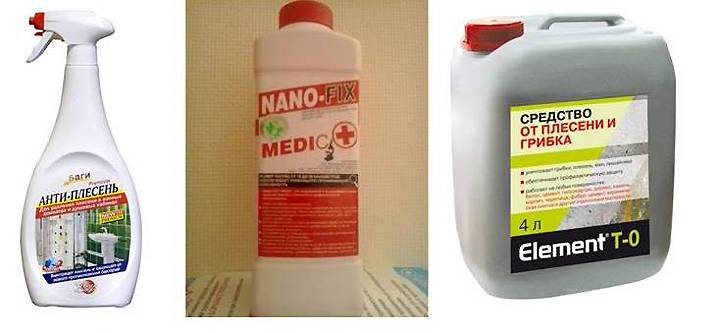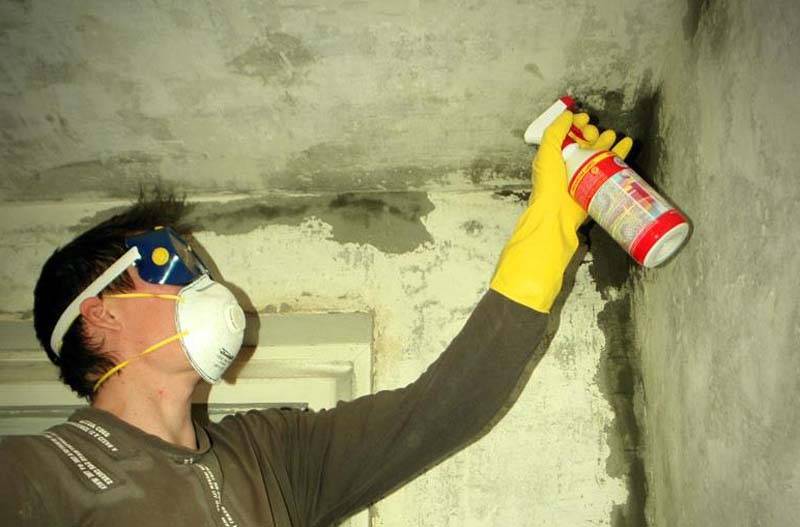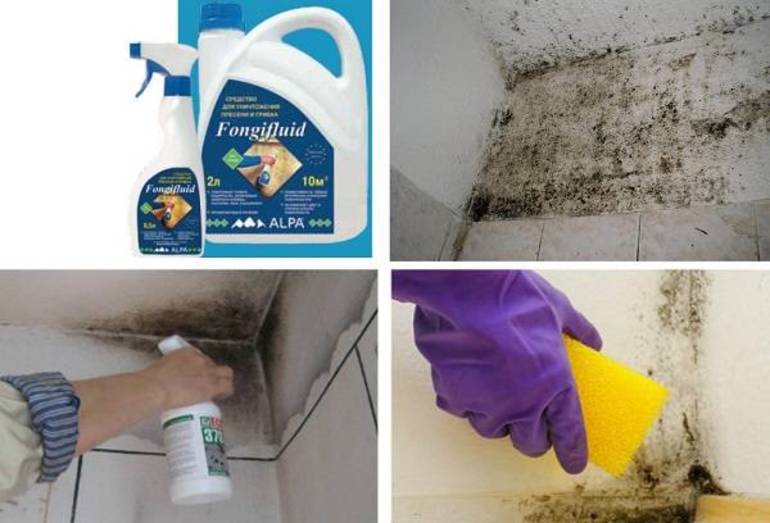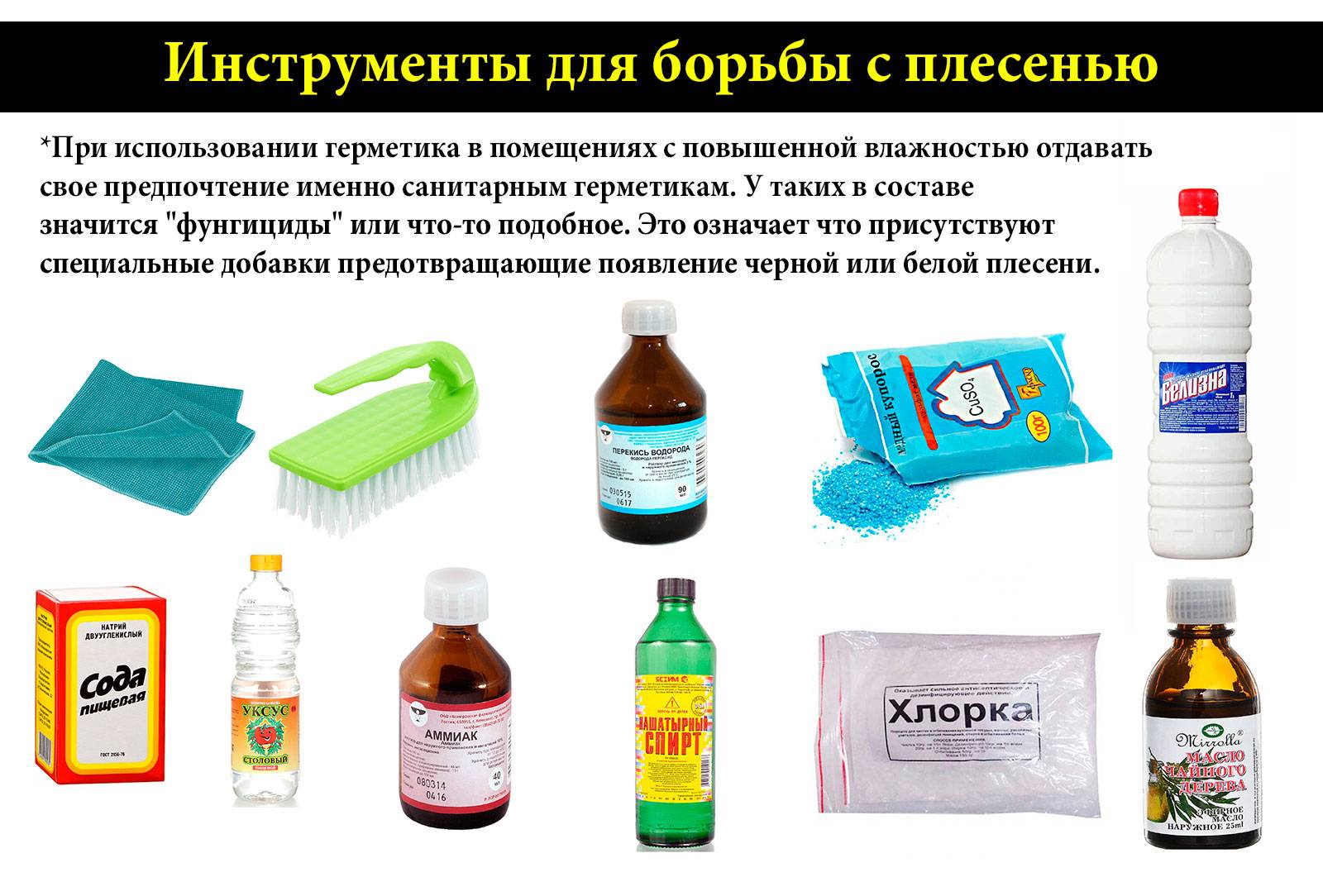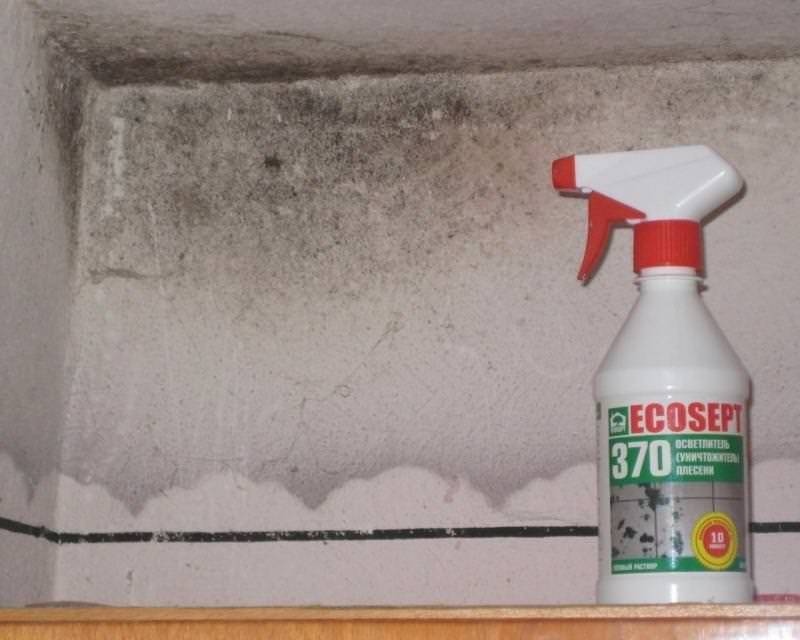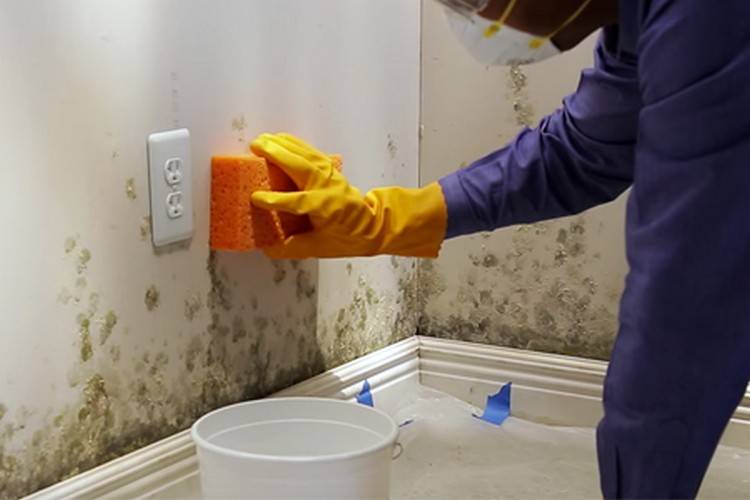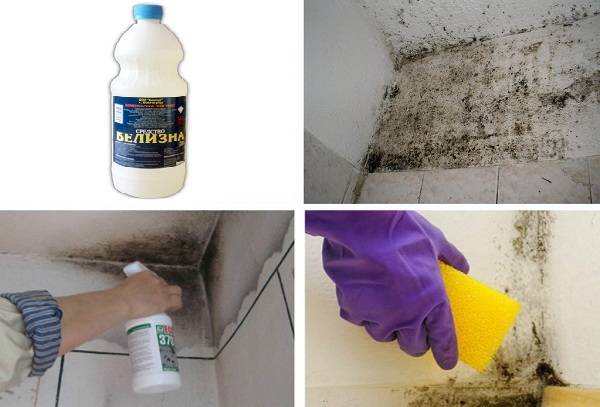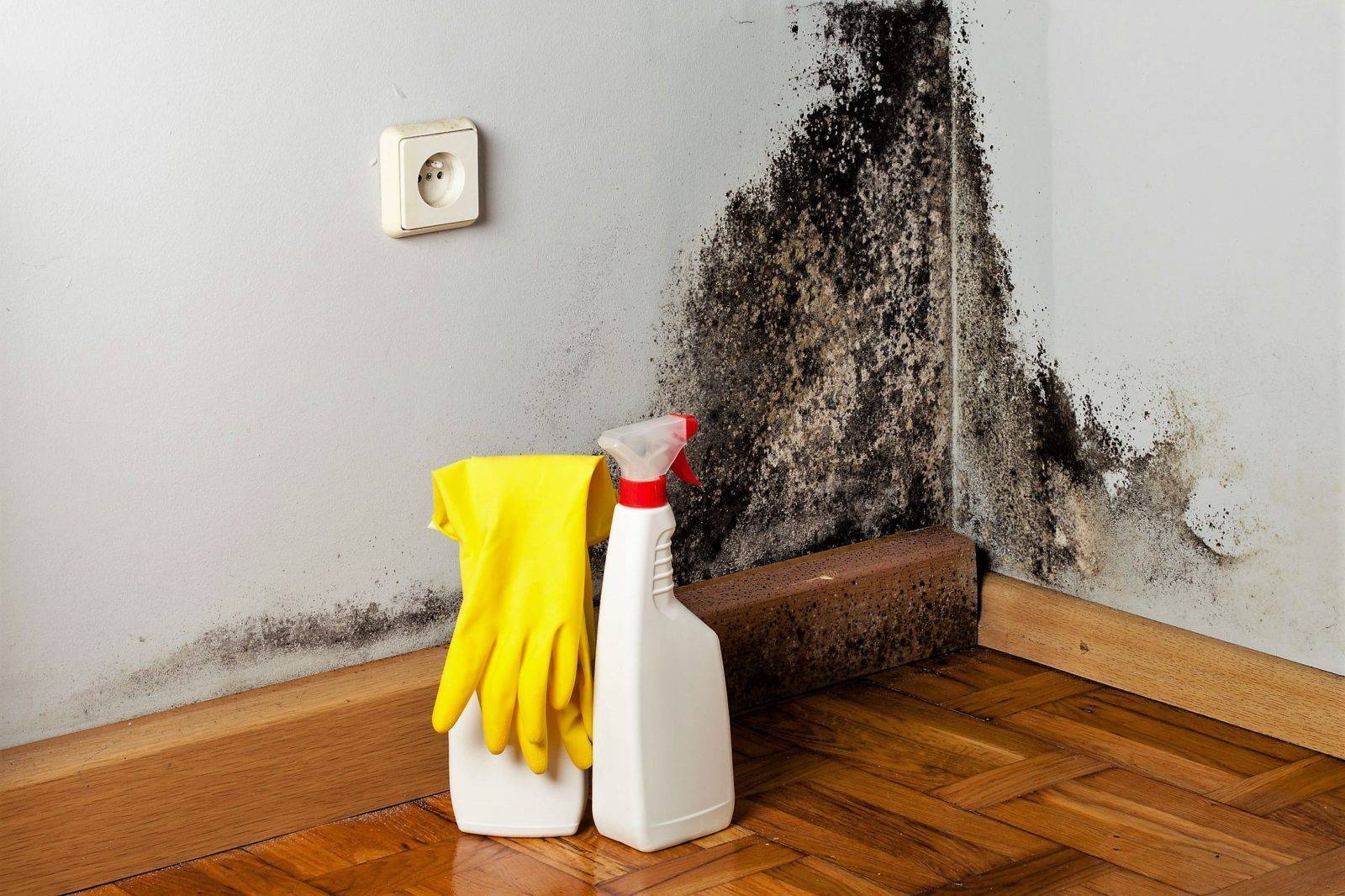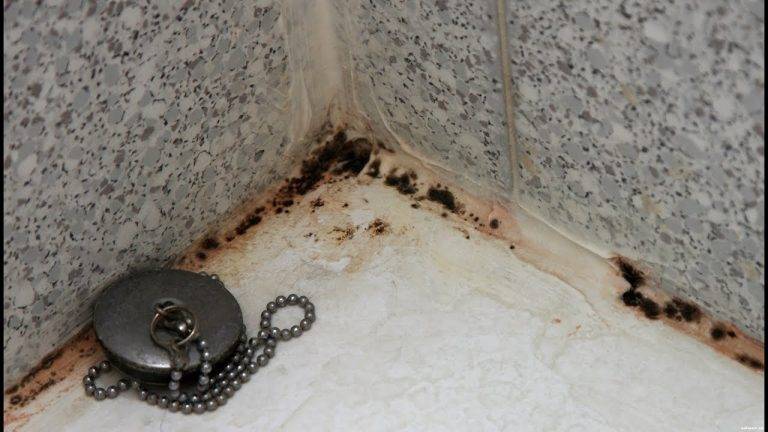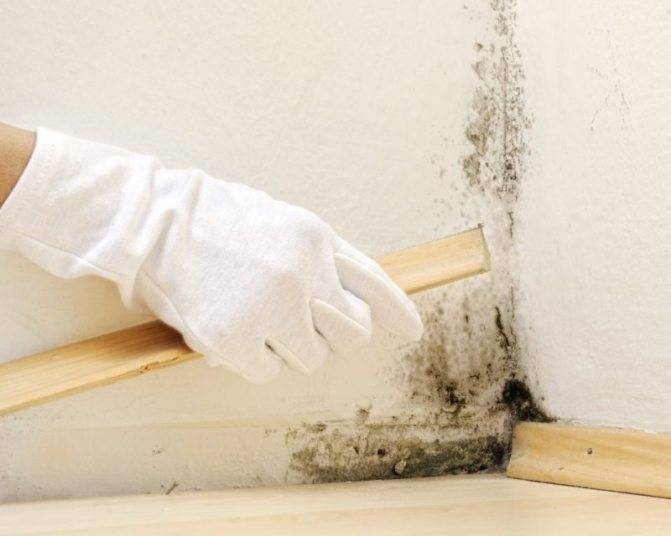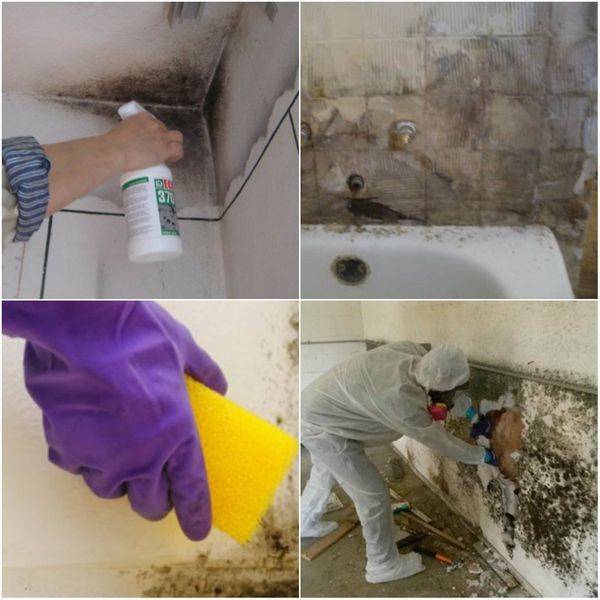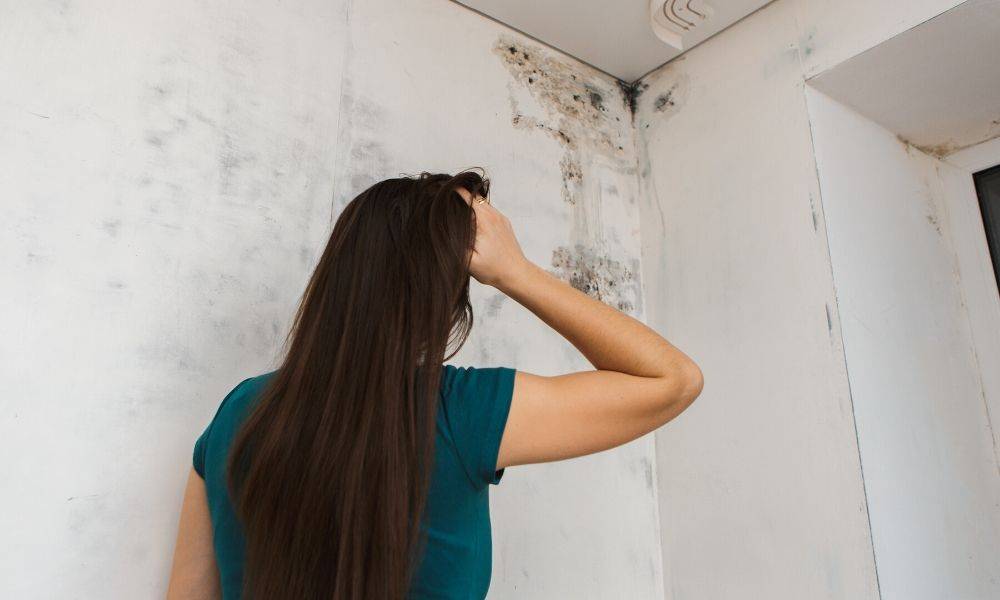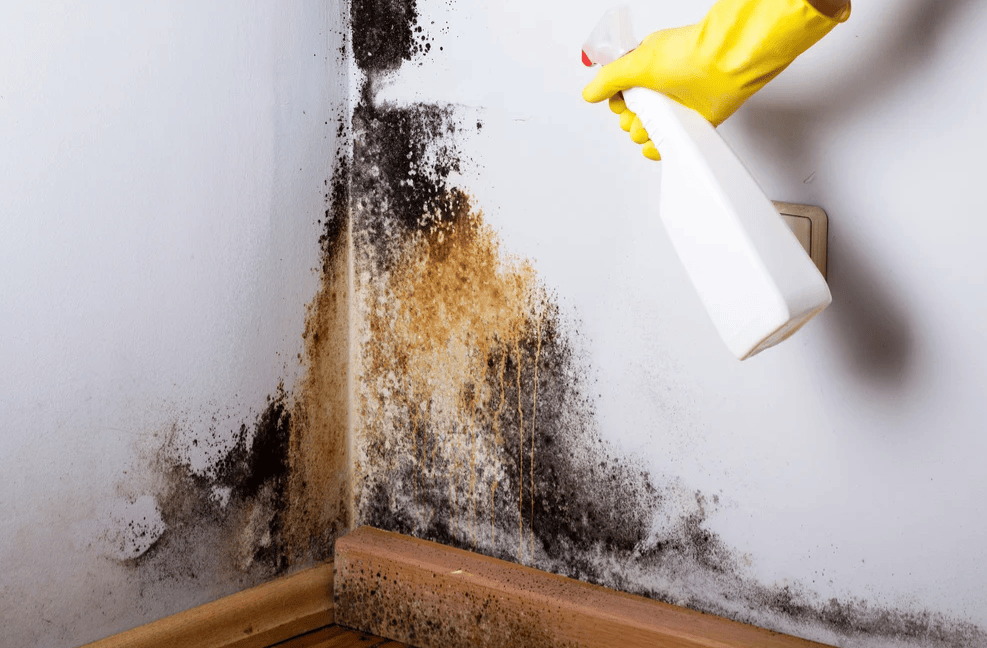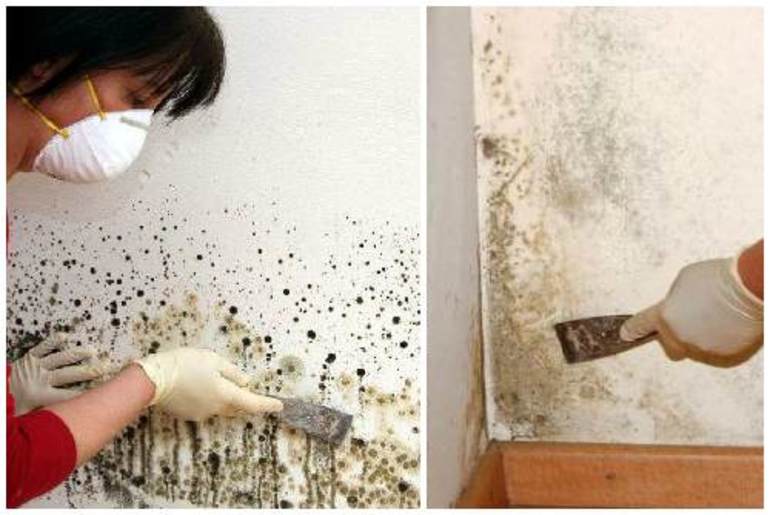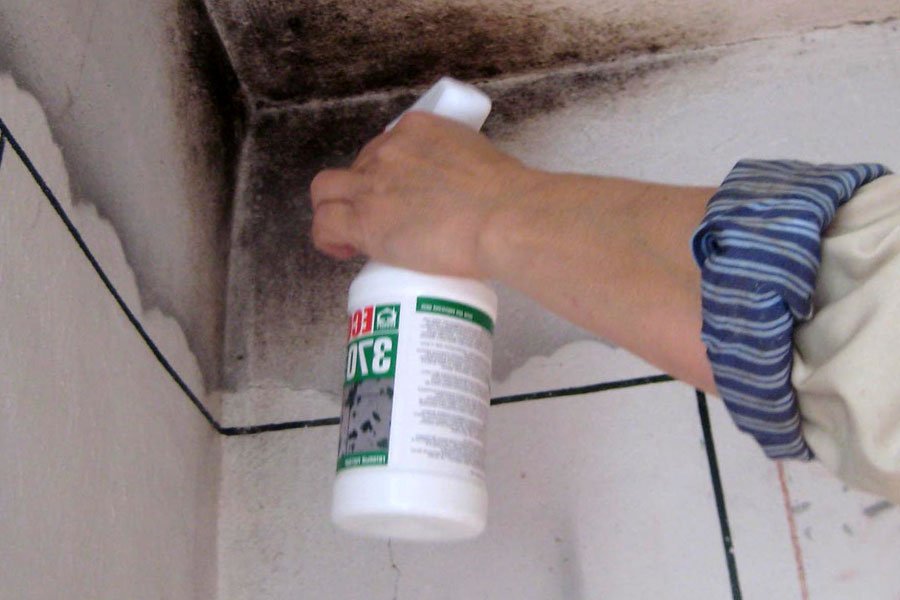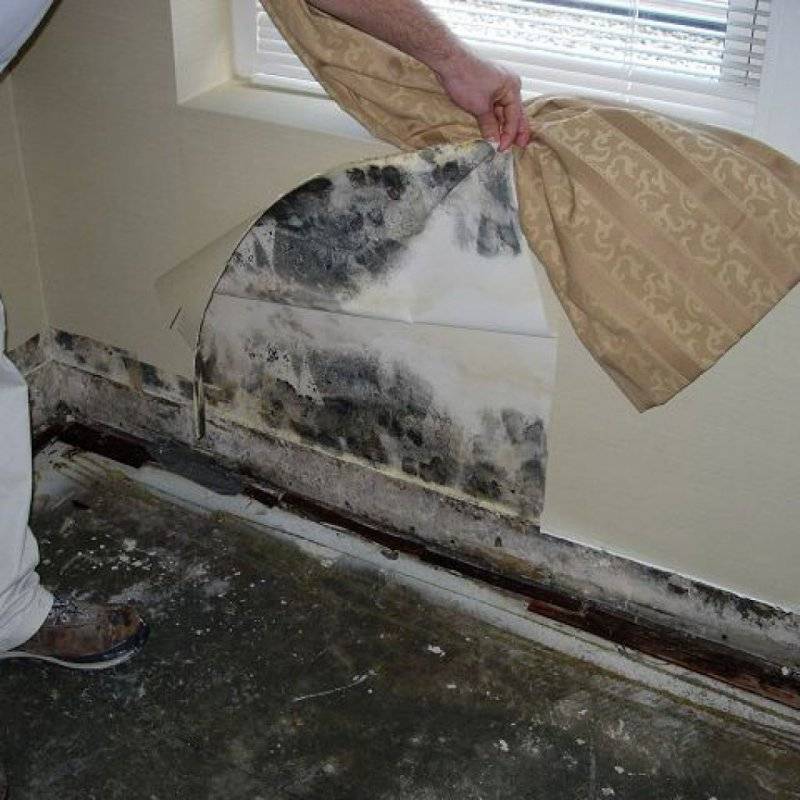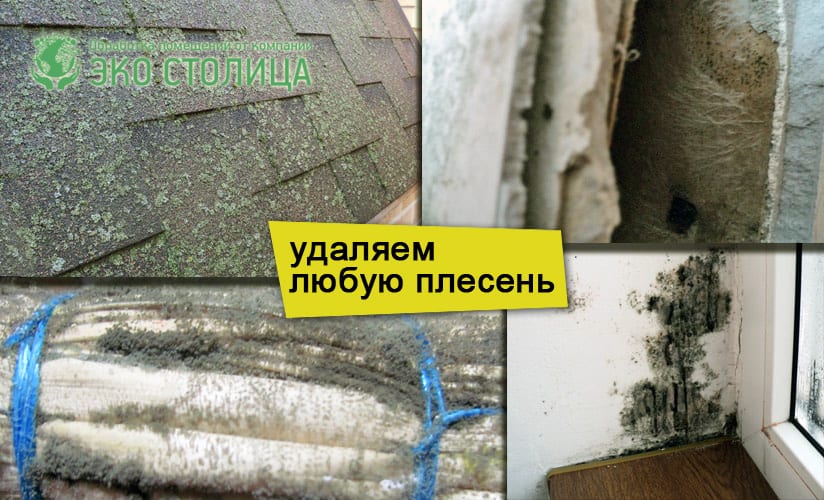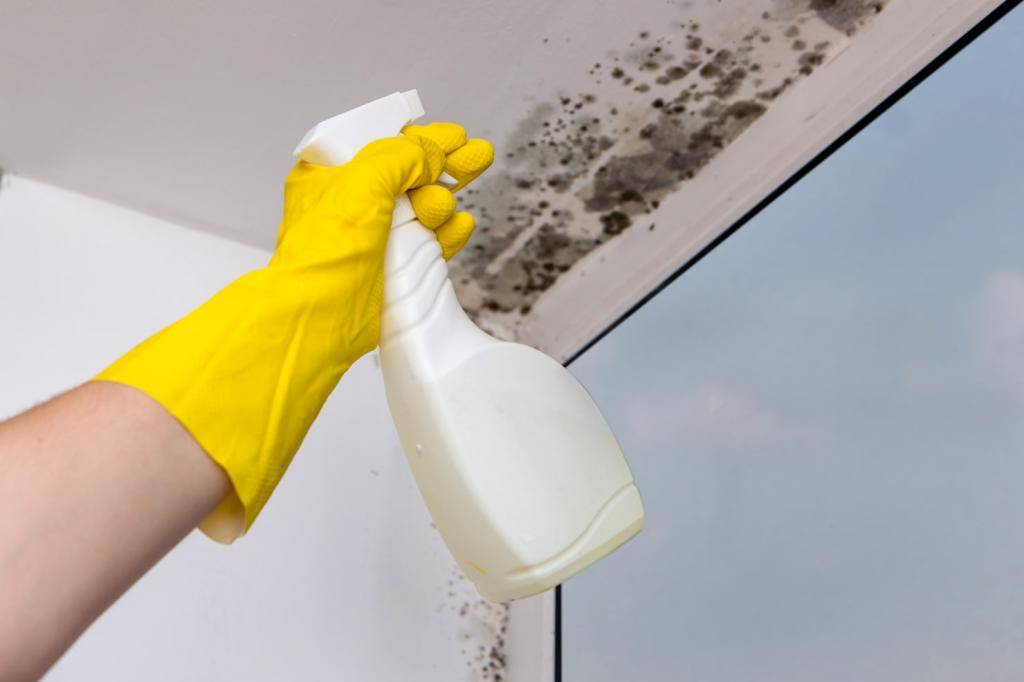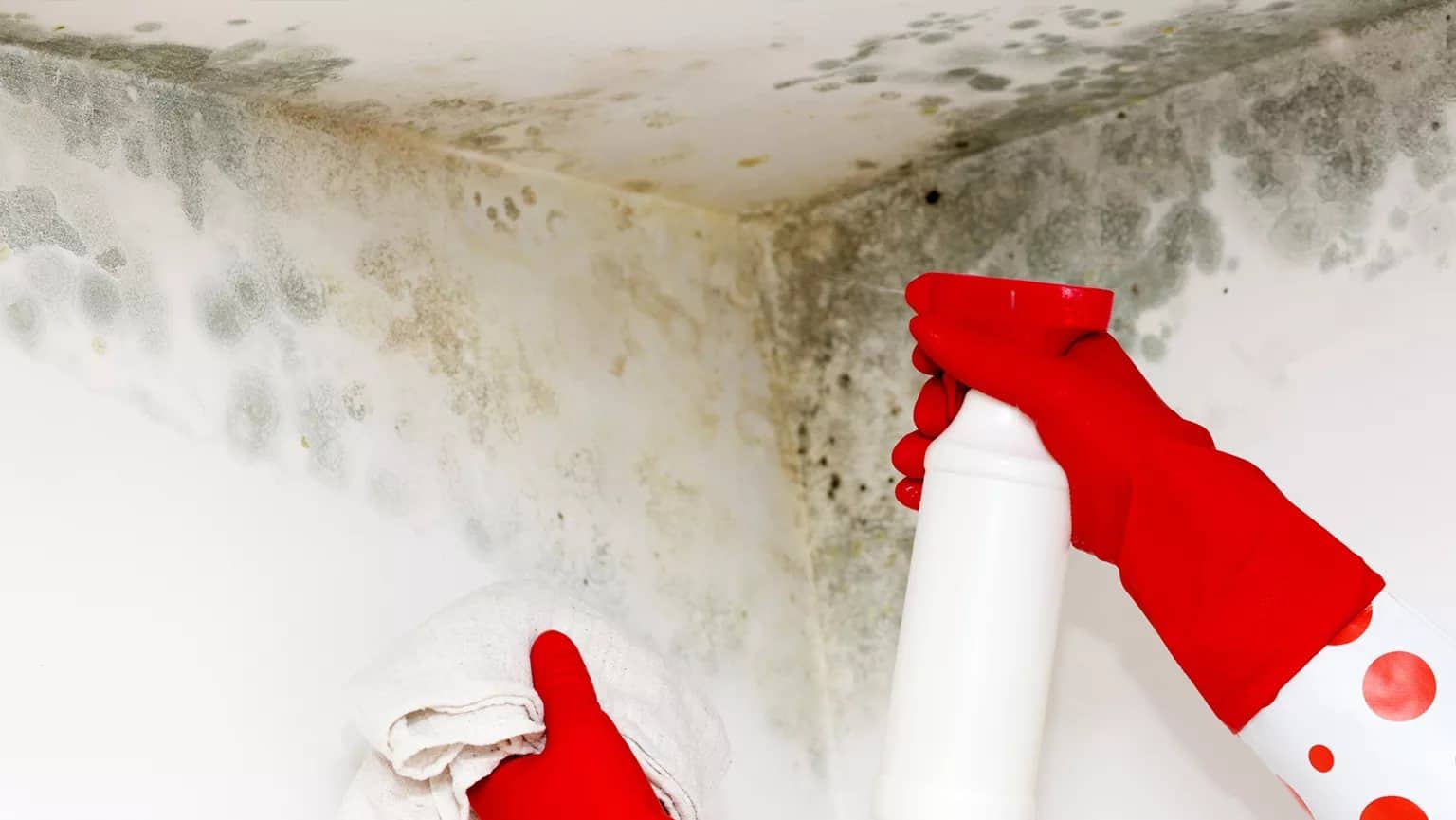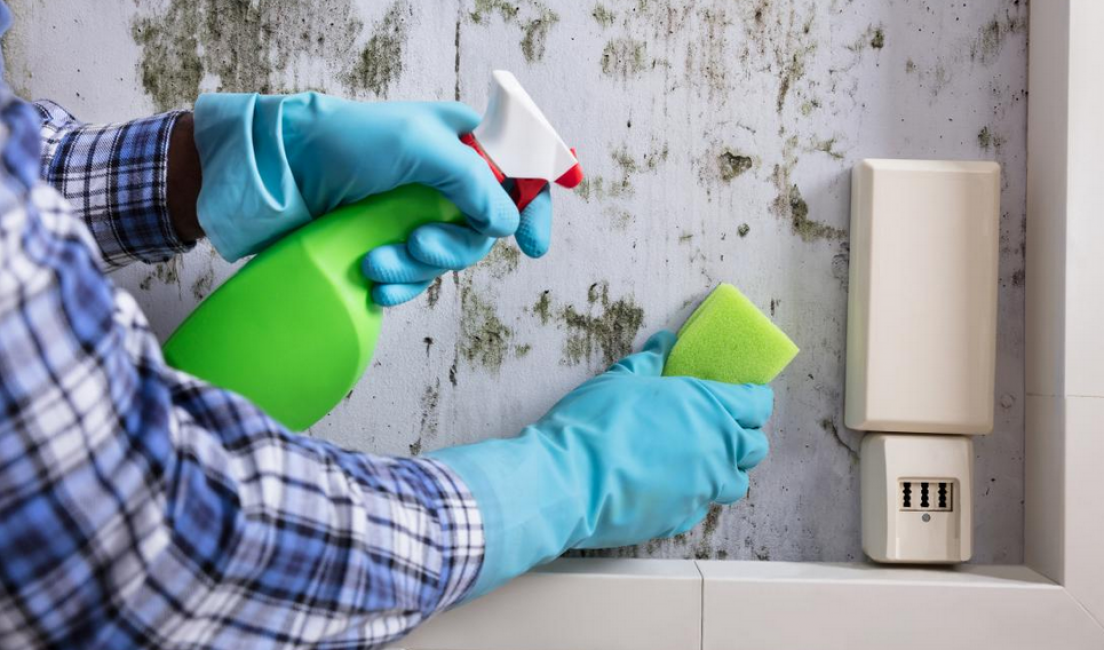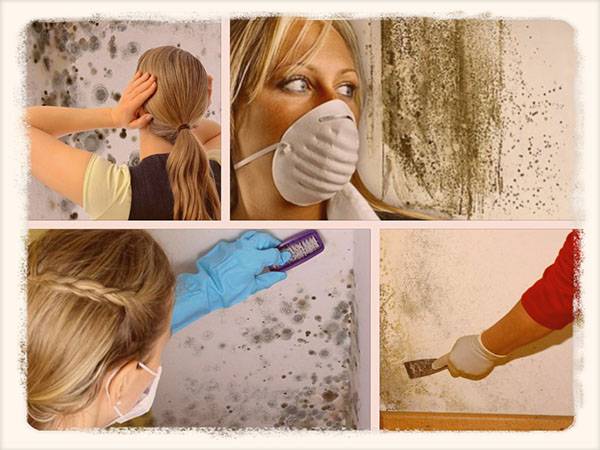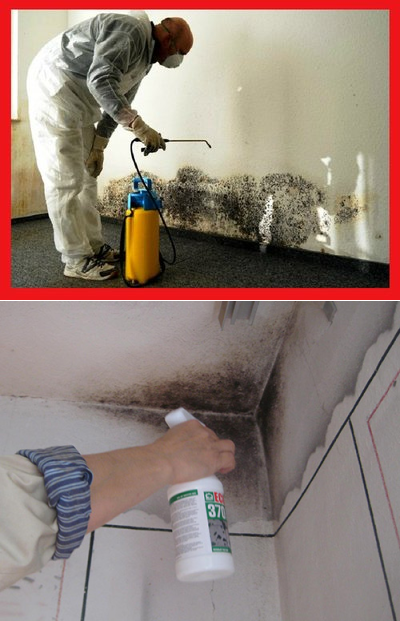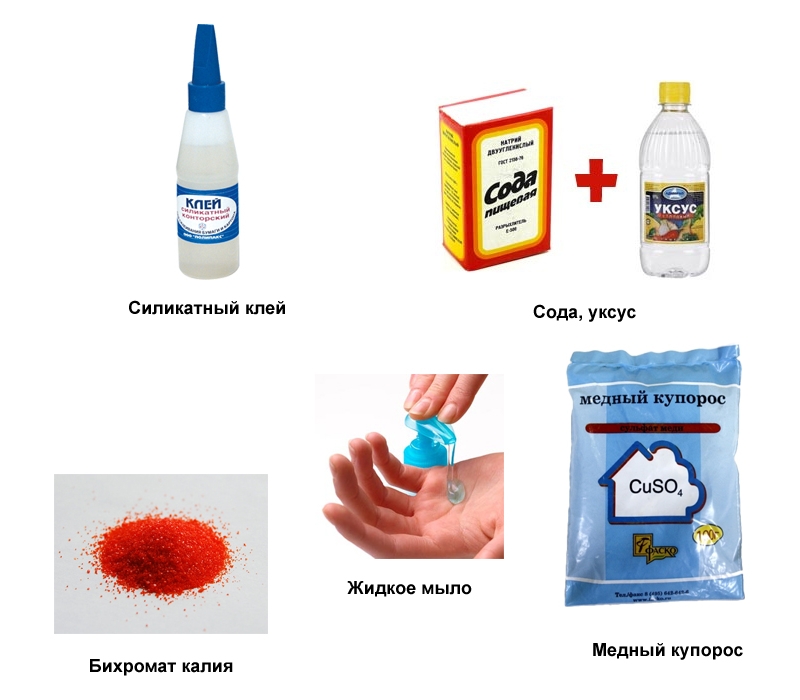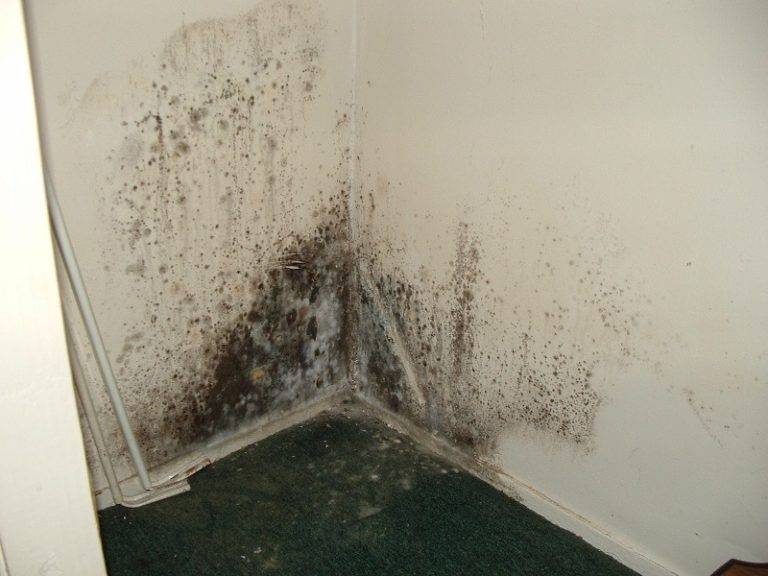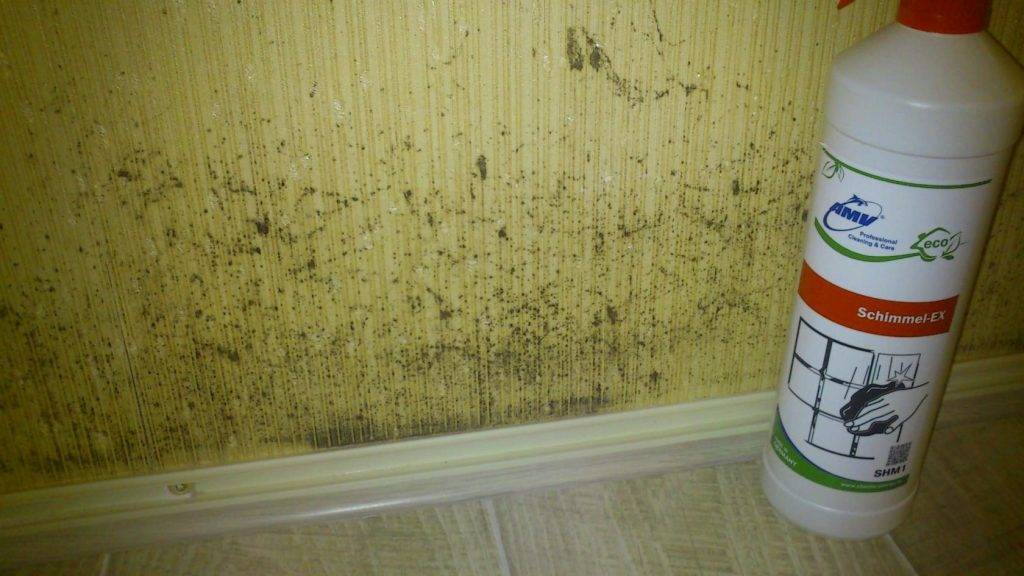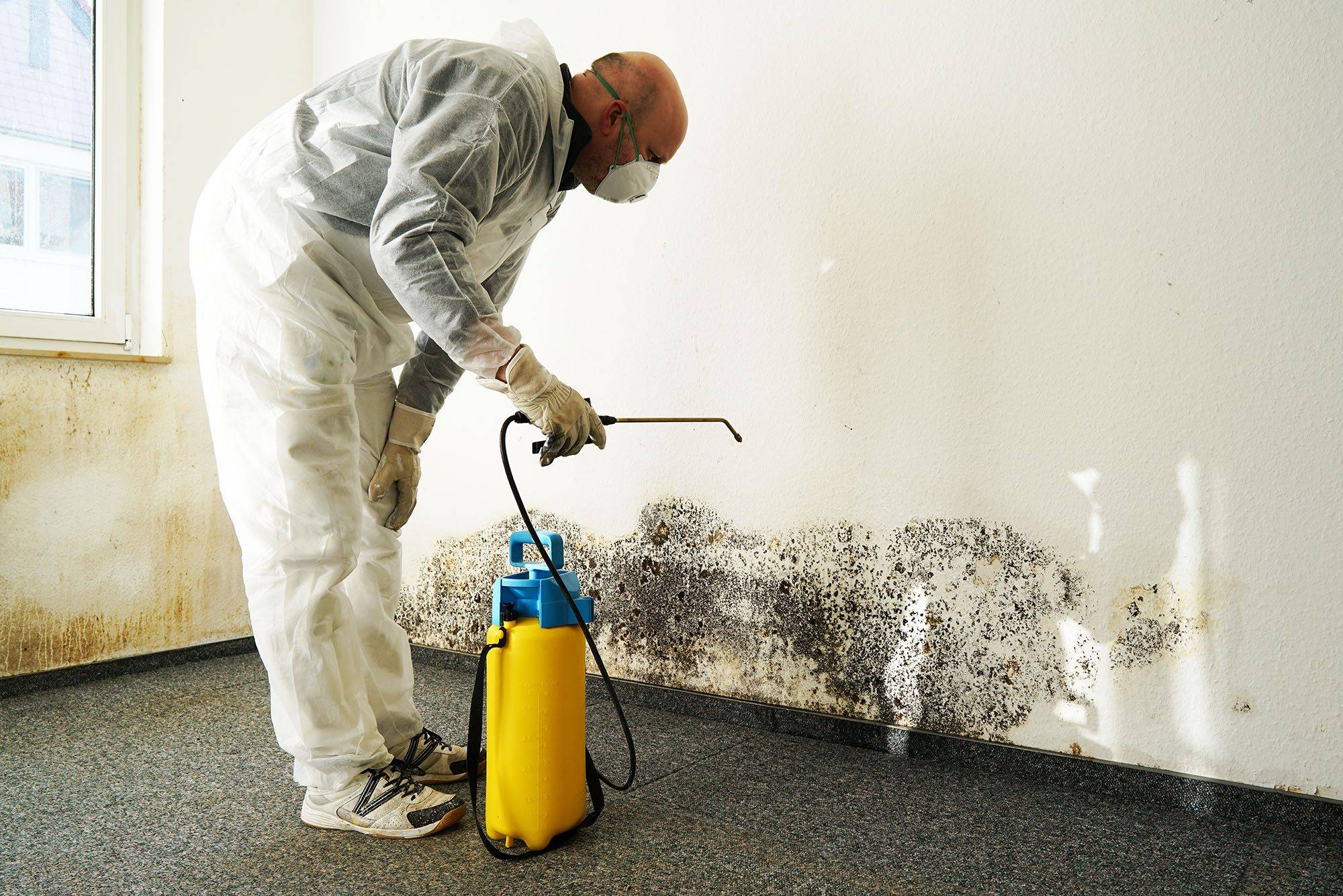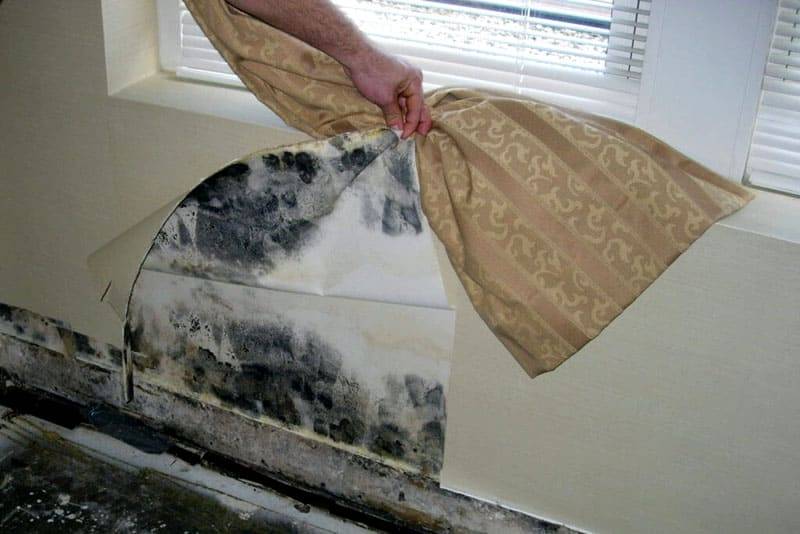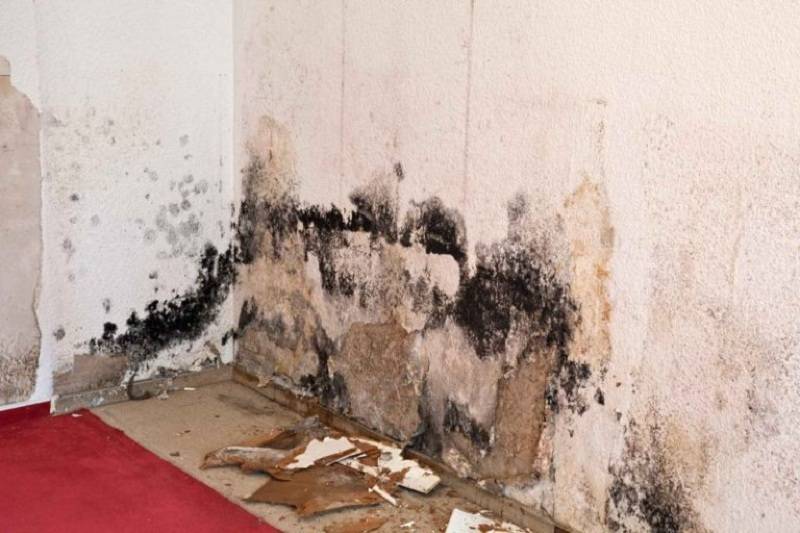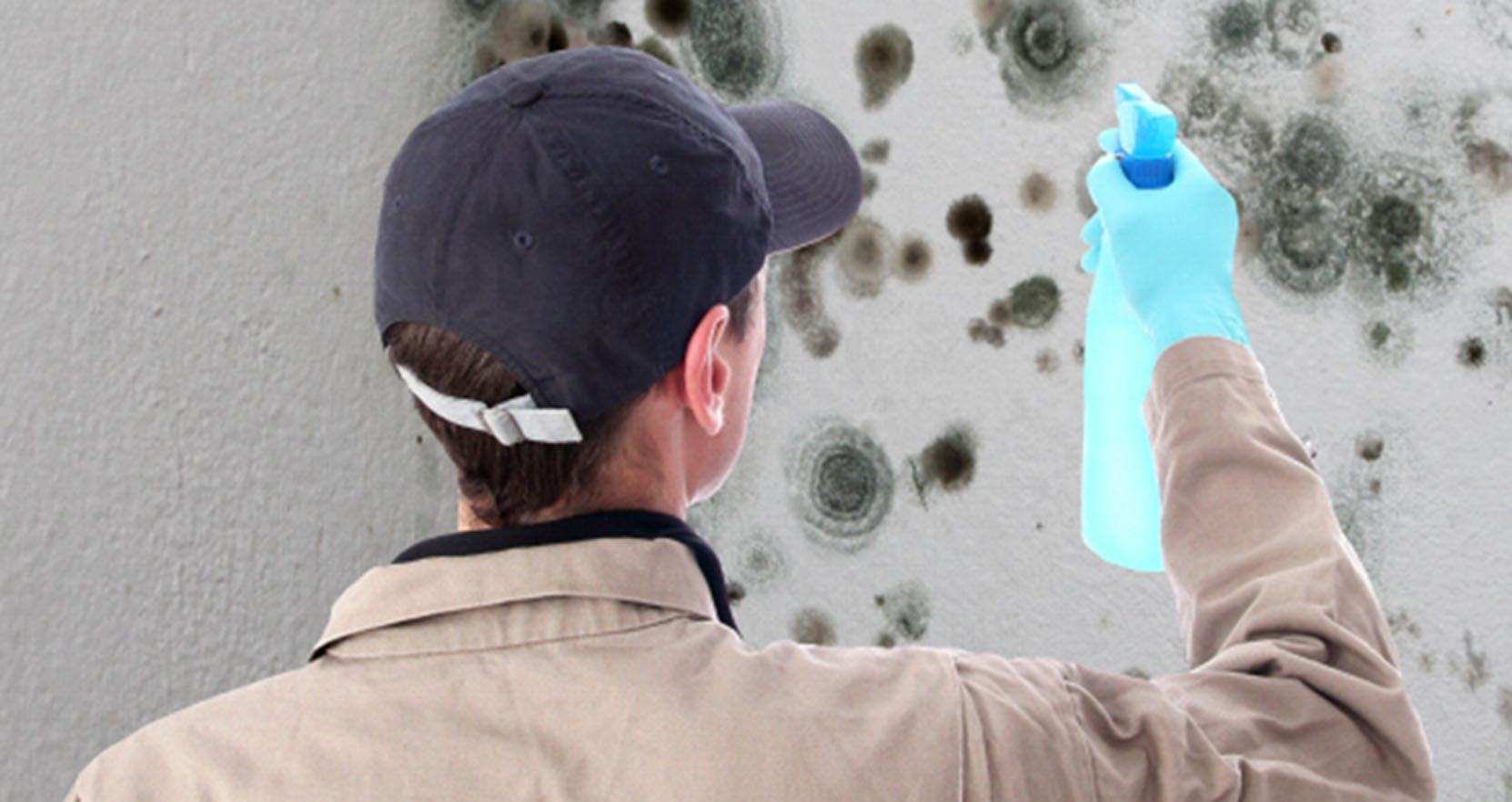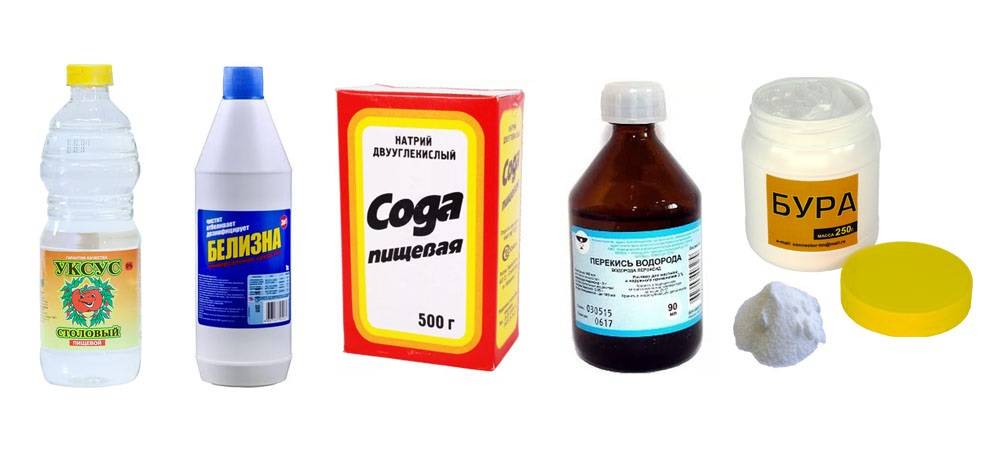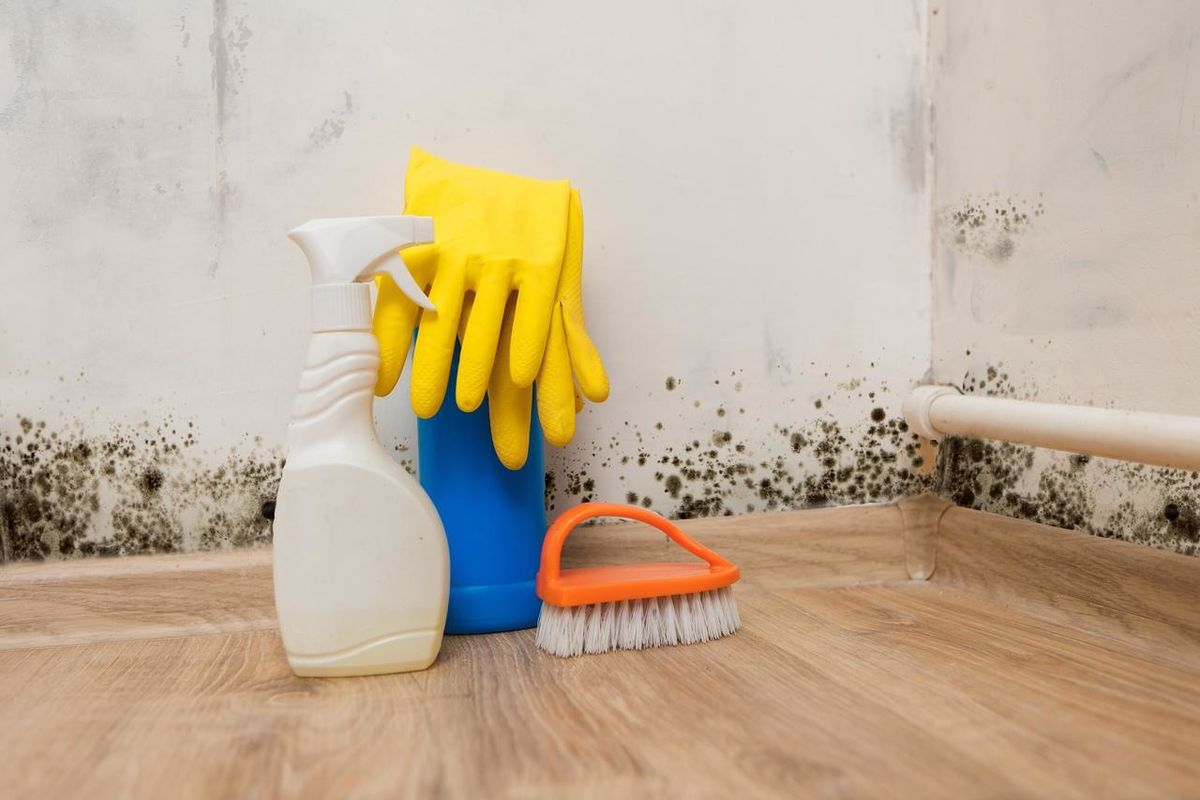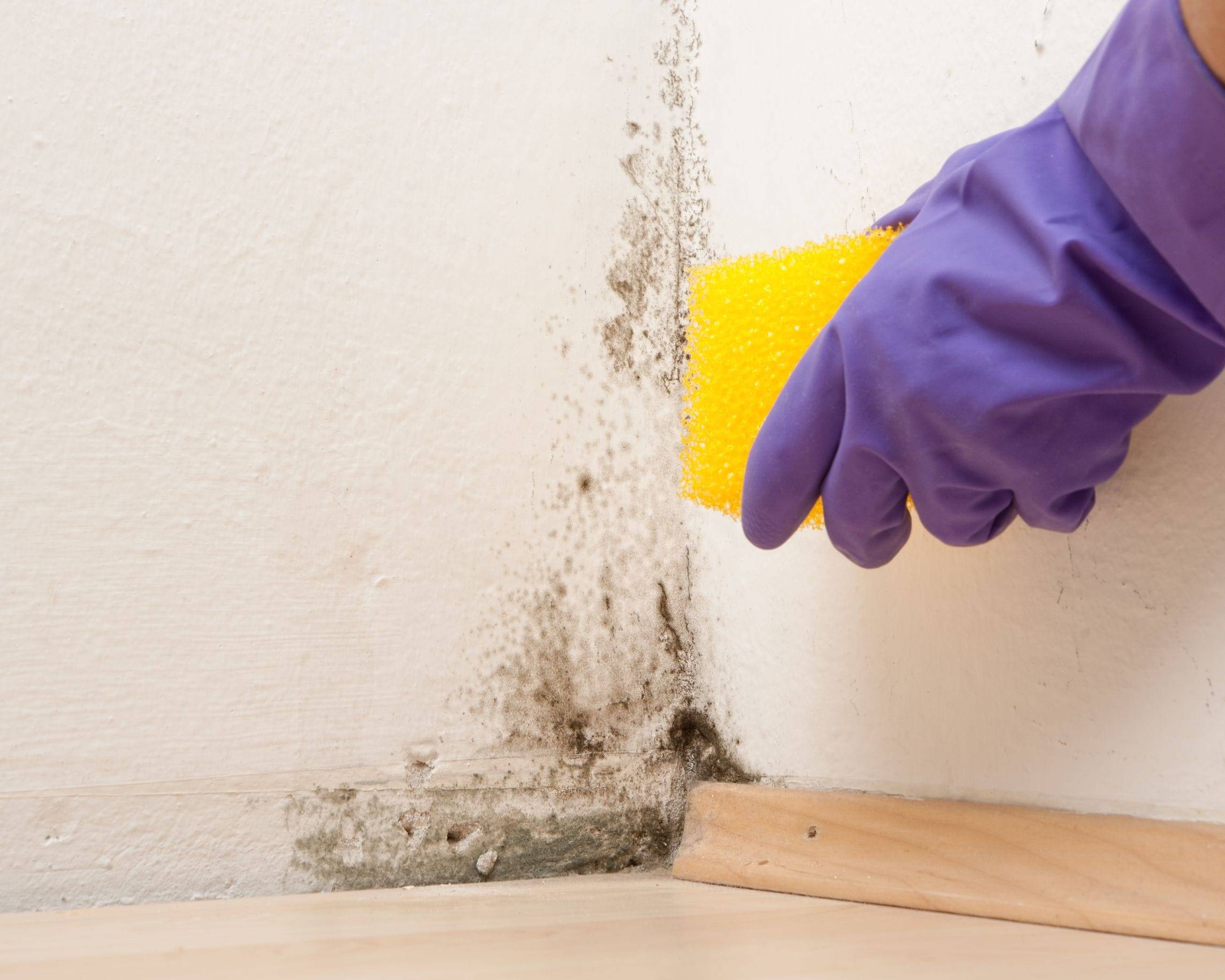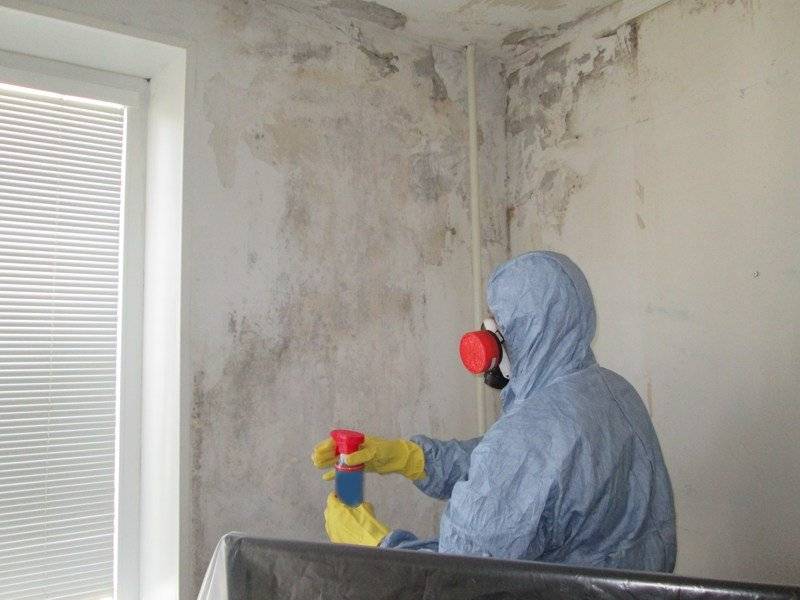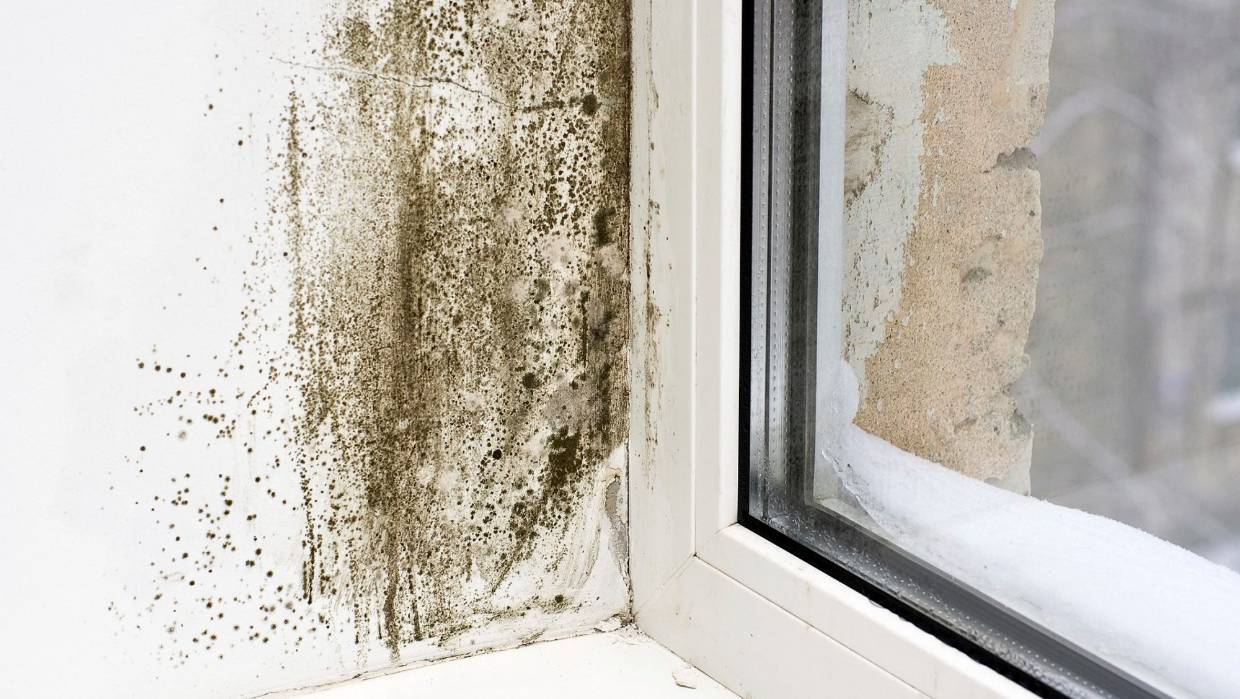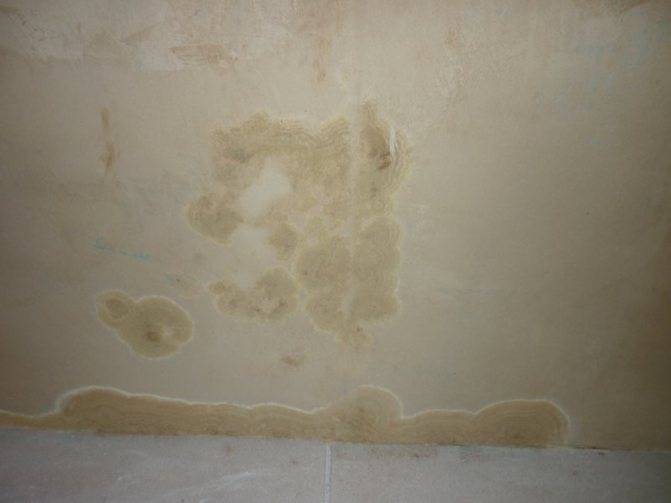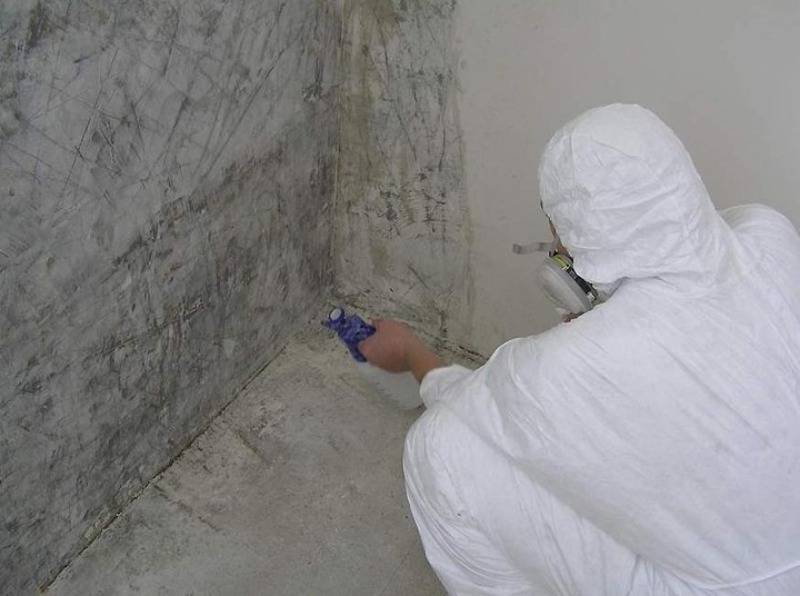Why is mold dangerous?
Many of us, having discovered the mold, postpone its removal until later, when time appears, money appears, etc. And this can turn out to be fraught with their health. As mold develops in your home, many diseases can also develop, such as:
- Asthma and allergies
- Choking attacks and persistently blocked nose
- Eczema and dermatitis
- Bronchitis and other respiratory diseases
Therefore, if a fungus is found in your home, start the fight without delay, it will come out more expensive.
Interesting fact: A special and very expensive delicacy is moldy sausage, which is made in Italy. The sausage is kept in the basement for about a month, after which it becomes covered with light green mold and sent for special processing, and after three months it can be enjoyed.
Ventilation
It is imperative to establish ventilation. To dry the air, it is enough to install an air conditioner. When cooking, you need to turn on the hood.

Insulation quality
It is necessary to insulate the outer and inner walls of the apartment. The heating system must be brought into working order or replaced completely.
Cracks
Be sure to monitor the health of the plumbing. Through the smallest cracks, moisture can penetrate under the floor, the overall humidity in the room rises.
Poor sealing of the roof roof and interpanel joints
Sealing the roof and interpanel joints can reduce the effects of moisture and prevent mold. The procedure should only be carried out by specialists. They are the ones who know a special technology, in which the work is carried out efficiently.
How to remove mold on the walls in an apartment: a list of popular fungicides
Although today the construction chemistry market is represented by a wide variety of drugs that can effectively fight the formation of fungus, when choosing the most suitable antiseptic for your case, you need to take into account not only the place of work, but also the type of dispute that will have to be dealt with (which may require expert advice) ... Whereas, the following tools can be distinguished as universal components for combating mold.
|
Fungicide type |
Specifications |
Areas of use |
|
AtlasMykos |
Concentrated remover for mold, lichen and moss |
Used in rooms with high humidity |
|
IzohanGrzybostop |
Means for combating spores of fungus and mold |
It is used for processing concrete and plastered surfaces |
|
Spectrum |
Fungicide for removing fungus in plaster and wood |
Suitable for both indoor and outdoor use |
|
Snowball Impregnation |
Solution for removing algae, lichen, moss, mold |
Suitable for the treatment of building plasters and masonry |
|
Titanium Fungicide |
A prophylactic agent capable of removing mold and mildew spores without removing finishing materials |
Used in rooms with high humidity to prevent the spread of fungus and mold on plastered, putty, painted surfaces |
|
PS 50 |
Composition for getting rid of algae from concrete and plastered surfaces |
For processing drywall, dry plaster, wood. |
|
Anti fungus ABEDIS |
It is a safe remedy for combating organic deposits from fungus, mold, moss, algae |
They are used in basements, roofs covered with roofing tiles and eternite, concrete paths, ceramic and stone cladding. |
In addition, to solve the problems presented today, paints and varnishes and building materials with antiseptic components are being actively introduced, which minimizes the risk of mold development later.
Turning to professionals
Contacting professionals is an expensive procedure, but which will be 100% effective and will save the house from the harmful effects of pathogenic microorganisms. This is a whole process that requires preparation. It is carried out according to the algorithm:
- identifying the cause;
- limiting all furniture and structures from contact with other things;
- ensuring optimal climatic conditions for work;
- complete destruction of mechanical fungus;
- chemical treatment;
- drying and remedial measures, if required;
- antiseptic and varnish coating.
Of course, the complex of works varies depending on the conditions (outdoors or indoors, the size of the treated surface), the type of education.
Methods for removing fungus in a private house
Even in a house with expensive renovations and excellent furniture, fungus can settle on the walls. Spores are constantly present in the air, which quickly develop under the influence of high humidity.
The fungus in the house not only spoils the interior and affects comfort, it is dangerous to human health, as it causes asthma, allergies and other dangerous diseases.
- Eliminate the prerequisites for the appearance of fungal mold. Reproduction is facilitated by a humid and insufficiently warm environment. Therefore, ventilate your home at all times. Leave the curtains open during the day to get enough sunlight into the rooms.
- Do not block the ventilation. Keep the ventilation openings in the toilet and bathroom open. Be sure to install fans in these rooms. It is not uncommon for mold to occur inside old pipes, so change your plumbing if possible.
- Leave some space between walls and furniture. As a result, the air will be able to circulate normally. Buy a special device that monitors the humidity level in your home. This will help prevent the fungus from reoccurring.
- Clean out the affected areas. To destroy the fungus, carefully clean the affected areas on the walls. Soda and vinegar will make the task easier. Sprinkle baking soda over the infected areas and sprinkle with vinegar on top. You may need to remove the putty layer if the spores have penetrated too deep. After the procedure, treat the surface with high temperature using a hair dryer or a large lamp.
- Treat the walls with the composition of water and copper sulfate in equal proportions. This treatment will help get rid of fungal mold. If there is no copper sulfate by hand, use an antiseptic. Special preparations are sold in hardware stores. Then apply the final finish to the walls.
Do not forget to regularly carry out prevention. Wipe down surfaces once a month with a baking soda solution or antifungal detergent. Three tablespoons of baking soda is enough for a liter of water.
Contacting cleaning companies
If you could not overcome the problem on your own and the black "guest" visits the premises again, you should contact the professionals.
At the same time, the minimum processing area to which the specialists will leave will be 5 m2, the price for applying the chemical composition is from 350 rubles. per m2.
Getting rid of mold with the help of specialists from the Mold Stop company costs an average of 3 thousand. rub.
All available innovative technologies will be involved. Namely - diagnostics, surface cleaning, quartzing the room from spores. If necessary and at the request of clients, recommendations are made regarding the maintenance of the declared effect.
You need to entrust the work only to trusted cleaning companies. It is worth checking the recommendations, reading the reviews. This will save you from disappointment in the end result and loss of money.
3 We remove green and white plaque - effective ways and means
What to do if you see green or white mold on the wall in your apartment? Of course, remove it and as soon as possible, until you or your household has a chronic allergy. And it's better to do it like this:
- 1.Soak a rag in warm, soapy water with a little chlorine bleach and wipe away any mold stains. This will remove the surface layer and mark the colony's “residence”.
- 2. If the stain does not come off with a rag, try an iron dish scouring pad or a toothbrush with as hard bristles as possible. It can be used to scrape the mold off the wall in the apartment and complete the external (cosmetic) removal.
- 3. Prepare any chemical agent (preferably in advance) and apply a thick layer to the wet spot. For stubborn stains, apply a couple more coats after the previous one has dried.
Almost all building materials have the ability to absorb liquids, so repeated treatment of mold stains will help to saturate the “mycelium” with a poisonous (for microorganisms) substance. Well, without impregnating the mycelium, you can only organize cosmetic removal of mold in the apartment. After 3-4 weeks, it will return to its place and bloom on your walls with renewed vigor.
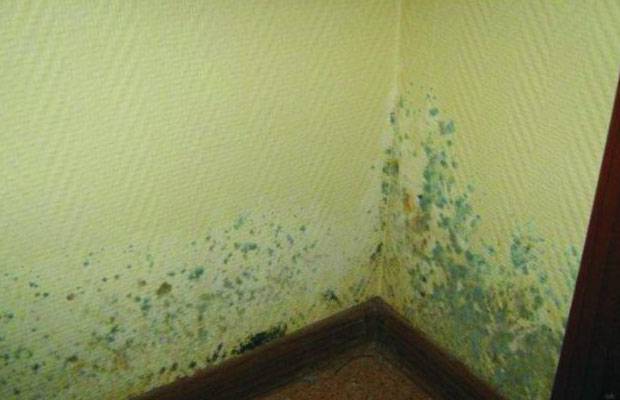
Green mold can cause allergies
The list of means by which you can remove mold from the walls of the dwelling is as follows:
- Mellerud Liquid - This preparation can even be applied over wallpaper. But ideally, it is sprayed over tile, plaster, concrete or wood wall. The tool allows you to remove the fungus on the wall with a 100 percent guarantee.
- Schimmelentferner Dufa aerosol is a ready-made product that can be used to remove fungus on the inner wall of an apartment or on the facade of a house. The aerosol disinfects surfaces as it contains chlorine.
- Boramon C30 is an antiseptic for fighting mold in an apartment, in the interior of which there are beams and wood panels. Suitable for floors as well. This preparation penetrates deeply into the wood and allows you to remove mold without damaging the base structure.
- Snezhka Impregnation - this tool is useful in an apartment as a primer or an additive used to mix tile adhesive. If you use Impregnation during renovations, then mold will not bother you for the next couple of years.
- PS 50 - preparation for drywall and plaster. With it, you can remove mold on the walls without damaging the paper base of drywall or decorative plaster.
For the green and white varieties, these products will be sufficient, but to effectively deal with black mold, you need completely different solutions to the problem.
Folk and professional methods of dealing with mold on the walls
When it comes to how to get rid of the fungus and mold that have settled on the walls, ordinary people prefer to focus on folk methods. Their effectiveness has been tested by years of everyday everyday experience, which, however, does not exclude the possibility of an insufficient result.
Mold in the bathroom and any other room can be removed with table vinegar, which effectively cleans the surface of the walls from fungal formations. The affected surface is wiped or sprayed with vinegar, after which it is wiped with water, and the room is ventilated to eliminate the pungent odor.
Plain vinegar fights mold well
The classic antibacterial and antifungal agent is hydrogen peroxide. Everyone knows what to do with such a solution: coated surfaces should be treated with a 3% solution at intervals of several days - to consolidate the result. According to a similar scheme, ammonia, diluted in half with water, is also used, but its use is effective only in case of damage to smooth surfaces - tiles, plastic or glass.
Keep hydrogen peroxide in the bathroom all the time. But keep in mind that the container for it should be made of dark glass, or better - opaque. The container needs to be refilled from time to time - hydrogen peroxide decomposes over time into water and atomic oxygen and loses all its properties
A solution of one spoonful of baking soda diluted in a glass of water is also considered a worthy remedy. At the same time, soda is absolutely safe and does not require thorough rinsing of the surface after application.
The fungus stops multiplying in an alkaline environment, which can be used by washing the infected surfaces with a solution of baking soda
Equally effective is the use of bleach or any cleaning agent with a whitening element. The aggressive agent is diluted with water in a ratio of 1: 3, after which it is applied to the infected surface with a stiff brush. After use, the surfaces should be thoroughly rinsed and the room ventilated until the odor disappears completely.
Bleach, for example, we dilute the well-known "Whiteness" with water in a ratio of 1: 3 and get an antifungal agent for the treatment of tiles
Herbal remedies against mold are useless. The only essential oil that inhibits mold growth is monarda oil. It can be added to the aroma lamp
If none of the listed folk methods proved to be effective enough, experts recommend staying with professional tools that guarantee getting rid of mold once and for all. In this case, surface treatment takes place in several stages:
The wall is treated with a special preparation (Fongifluid or Senezh Effeo).
- Dried mold is removed with a dry brush.
- The surface of the wall is washed with clean warm water.
- After that, a primer is applied to the walls (Euro Primer or Universal), which should ensure the strength and air permeability of the walls.
Frequent washing of the walls in the bathroom and kitchen is a good way to prevent the appearance of mold, as plaque that is not completely visible to the eye accumulates on the walls over time - a favorable environment for mold
Surfaces next to infected walls must also be thoroughly washed, as mold spores spread quite far
Knowing how to remove mold with the help of folk and special means, you can not only fight, but also defeat the fungus, forever getting rid of the unpleasant plaque on the walls.
If the problem of mold has already appeared in your apartment, next time when buying wallpaper, pay attention to their special marking indicating resistance to fungus ("mold proof" or another, which the consultant in the store will tell you about)
Causes of mold in the bathroom
The main reason for the appearance of fungal black spots is dampness, which occurs during freezing and poor ventilation. To remove them forever, you need to understand all the factors that affect their formation:
- pinpoint leaks in the water supply shaft;
- uneven heating;
- weak hood;
- local hypothermia;
- damage to the drainage system;
- cracks in the masonry;
- violation of the sealing of interpanel seams;
- drying used wet towels indoors;
- poor-quality sealing of seams;
- not cleaning after taking water procedures.
Having found mold and finding out why it occurs, it is necessary to get rid of it. The most correct solution is the timely implementation of preventive work that would prevent the formation of fungus.
We clean in the living room
Previously, the wall with the fungus on the wallpaper is carefully examined. If there are dark spots, which is very likely, the plaster is removed using sandpaper. You will need to carefully remove all the slightest manifestations of the fungus. After cleansing the affected area, a fungicidal solution is used to treat it. It is necessary to process the surface every 5 hours 5-6 times. After that, an antiseptic solution is used to prime the surface. Then they move on to plastering and puttying the wall, ending with gluing new wallpaper.
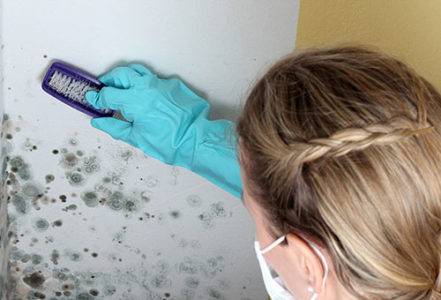
If you notice a small area that is affected by mold, you will need to take action immediately. Otherwise, it can lead to the growth of the fungus.Before you remove it, you need to prepare all the tools that you need to clean the fungus from the walls.
Bleach, which is diluted in water at a ratio of 1:10, is an ideal helper in the fight against mold. The resulting solution is used to treat the affected area
Great care should be taken when handling tiles with your own hands using bleach. All actions must be performed with rubber gloves
If the product is tested on wallpaper, it will become discolored.
If you need to remove mold from the walls and you cannot use bleach, then you can use vinegar. It is not necessary to dilute it, vinegar is applied to the fabric with which the area affected by the fungus is treated, and left for an hour. After that, the composition is washed off with water. Wipe the wall with this tool for prophylaxis with vinegar 1 time a week.
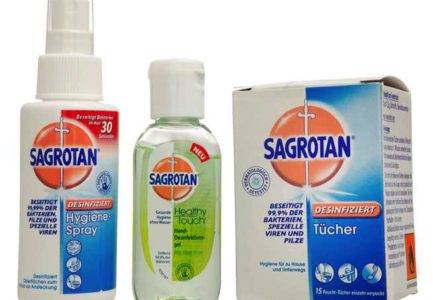
Removing mold from hard surfaces is carried out using ammonia, which must be diluted with water in equal proportions. The composition is used to wipe the damaged surface. If the surface was previously treated with bleach, then it is dangerous to use ammonia, since toxic gas begins to evolve.
Removal advice and precautions
Most construction organizations offer services for removing mold in the apartment, those who decided to cope with the problem on their own should take into account the recommendations below in order to do everything as efficiently as possible and not harm their health.
1Before removing the mold, it is necessary to establish the cause of its occurrence and take measures to eliminate it. It so happens that it is impossible to eliminate this factor, in this case, high-quality ventilation of the room should be provided so as not to create conditions favorable for the growth and development of the fungus
This can be done by opening the windows for at least 10 minutes 2 times a day.
2 Contact with mold during the removal process can be detrimental to health, so wear full body clothing, rubber gloves, a breathing filter and safety glasses before work.
3It is important to remove not only the fungus itself, but also its spores, which, as a rule, cannot be seen with the naked eye. Only high-quality cleaning and disinfection of the walls will prevent the recurrence of mold.
If you can remove the fungus with an ordinary soap solution, then you will not be able to get rid of the spores with the help of this tool.
4 If the fungus has infected not only the finishing coatings, but also the wall itself, then deeper work will be required to remove it. First, you need to remove the finishing materials, then dismantle the putty and plaster in places of decay and, if necessary, treat the brick or concrete base with a disinfectant solution. For those who do not have the appropriate construction skills, it is best to turn to professionals.
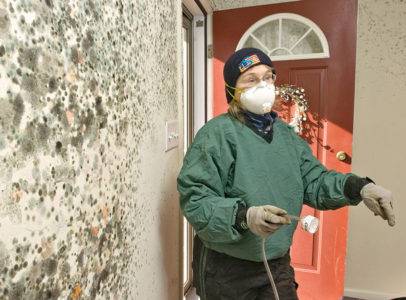
How to remove moisture
First of all, dampness enters the basement through cracks. They need to be found and eliminated, sealed with cement mortar, for which sometimes it is necessary to completely dismantle the ceiling, walls and floor of the cellar. After that, work is carried out on the device of external and internal waterproofing.
External waterproofing
To keep moisture out of the store, external waterproofing is best done during construction. If you need to redo, restore or re-equip it, then the concrete base of the cellar is exposed, cleaned, dried and a layer of waterproofing is applied.
At the same time, ready-made coating mixtures for waterproofing, primer, reinforcement, roofing material, polymer membranes, mastics and other materials are used. After completing the work, backfilling with sand, gravel and soil is carried out, laying geotextiles and drainage pipes. The final stage is the reinforcement and filling of the blind area.
Internal waterproofing device
To avoid dampness in the basement, a properly equipped internal waterproofing is required. If it is insufficient, the cellar must be rebuilt as follows. Before starting work, the storage is well dried, the coatings are removed from the surfaces, cracks and cracks are sealed with cement. Next, antifungal treatment of the cellar is carried out and dried again. The floor, walls and ceiling are coated with mastic, the places where there was a leak are treated with alabaster.
The following measures will help enhance the waterproofing effect:
- The walls of the cellar are being re-plastered.
- Brickwork is made at a distance of 3 cm from the walls.
- Ventilation shafts are being laid in new walls.
Cement floor
If excessive moisture accumulates in a basement with a cement floor, it is waterproofed as follows. First, the old floor is dismantled, after which cracks and cracks are removed, covering them with cement. The dried surface is covered with a layer of sand or expanded clay 5 cm thick and roofing material is laid. Additional protection of the cellar will be provided by a special waterproofing film for the floor. After that, a new screed is made, having previously repaired the cracks with bituminous mastic. For convenience, you can equip a wooden floor on the logs on top of everything.
Clay floor
If the floor is made of clay in the basement of a private house, then its waterproofing is provided using polyethylene laid in 2 layers. To do this, remove the top layer of clay 5 cm thick, cover the floor and the lower part of the walls with a film to a height of about 10 cm and cover it with a mixture of sawdust and clay in a ratio of 1 to 10 to the same height. with the same layer of clay, this time covering the walls up to a height of 25 cm.
During the precipitation season
When the dampness in the cellar rises directly during the precipitation season, without exceeding the norm the rest of the time, the floor is covered with a ten-centimeter layer of sand or gravel, if necessary, increasing its thickness. The appearance of condensation on the walls of the cellar can be prevented by covering them with a special "breathing" plaster such as "Monolith" or "Ceresit". For self-production of a waterproofing mixture, hydro-additives are added to dry plaster, for example, "Tsemaplast" or "Palmix".
How to reinforce a thin floor
Sometimes the reason for the high humidity in the cellar is the thin floor. In this case, the required thickness is achieved by installing a new cement screed, under which roofing material is placed, carefully coating the joints with bituminous mastic.
What is mold
Our high school biology course taught us that mold is a special form of fungi with branching mycelium without fruit chalk. In everyday life, we are used to calling the plaque that appears on food when they go bad. The fungus can form directly on the walls in rooms with high humidity: basement, pantry, bathroom. On the street, it is easy to notice mold on rotten stumps, tree trunks and just on the ground. Even in the air, her spores are present, although we do not see them.

Scientists call mold the most persistent and hardy life form on the planet. It comes in different types, shapes and colors. The beneficial properties of mold are used in medicine, the food industry, winemaking, but at the same time, the fight against the dangerous consequences of its life does not stop. The question of which is more - the benefits or harms of mold, still remains unanswered.
The causes of mold on the walls of the apartment and its harm to the body
Before you figure out how to treat walls from mold, you need to understand what mold is. A fungus that develops from air spores and appears in rooms with high humidity and insufficient ventilation can be considered a serious hazard. Since high humidity is necessary for its occurrence, most often black spots appear in bathrooms, in kitchens, in apartments on the first or last floors.You can find fungus anywhere: on air conditioner filters and in washing machines, on window frames and slopes, but walls remain a favorite place for mold.
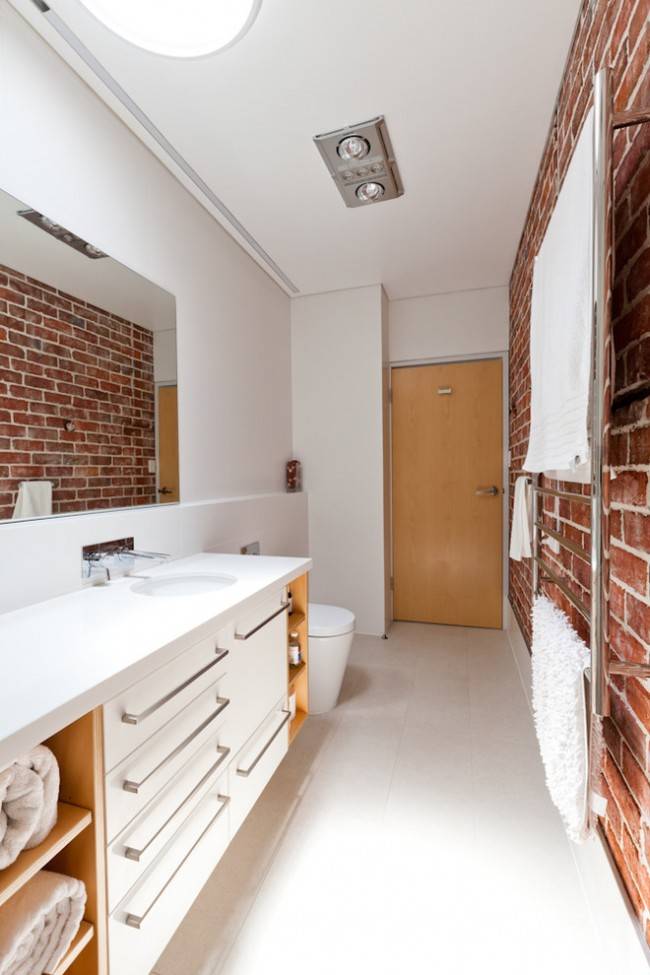
Take care of installing a forced draft hood in the bathroom. Warm humid air is practically a guarantee of mold growth

The drum and the seals of the washing machine dry slowly after washing. Clean them by hand periodically, and always keep the washing machine ajar.

Mold on the walls of an apartment can also appear due to the abundance of indoor plants. They will be the first to suffer from it.
The emerging mold in the house is the result of illiterate construction, a poorly functioning ventilation system and high humidity. That is why getting rid of the fungus in the room is a whole complex of works to eliminate all the causes. The fungus washed off the walls will quickly return if the same humidity and temperature regime is maintained in the room.
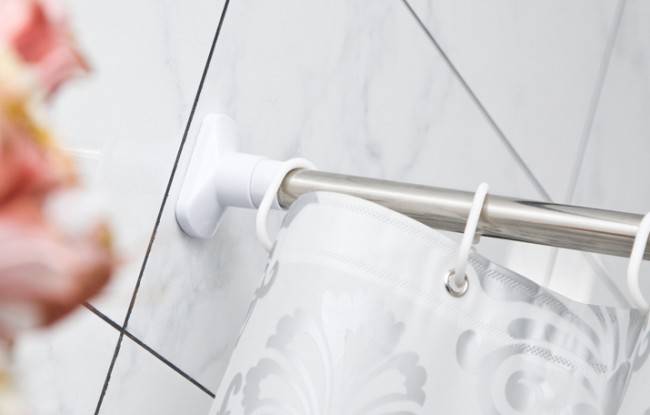
Mold often appears on shower curtains and from there spreads throughout the bathroom. Therefore, they need to be regularly washed with a sponge and soapy water (or washed if they are not PVC)

Mildew is most common in corners, behind skirting boards and around windows. The material of the wall cladding has practically no effect on this.
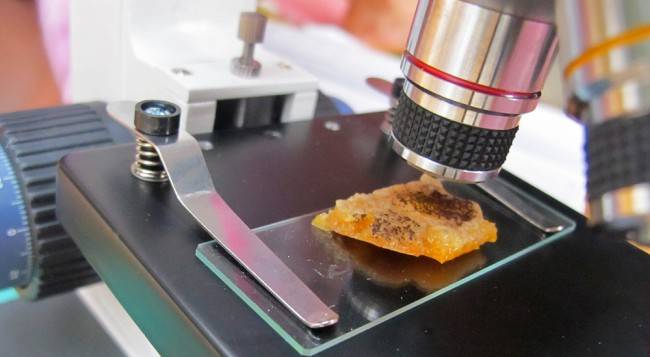
Black mold (Aspergillus niger) is inevitable if the kitchen is not cleaned well enough. Food leftovers quickly become infected with it.
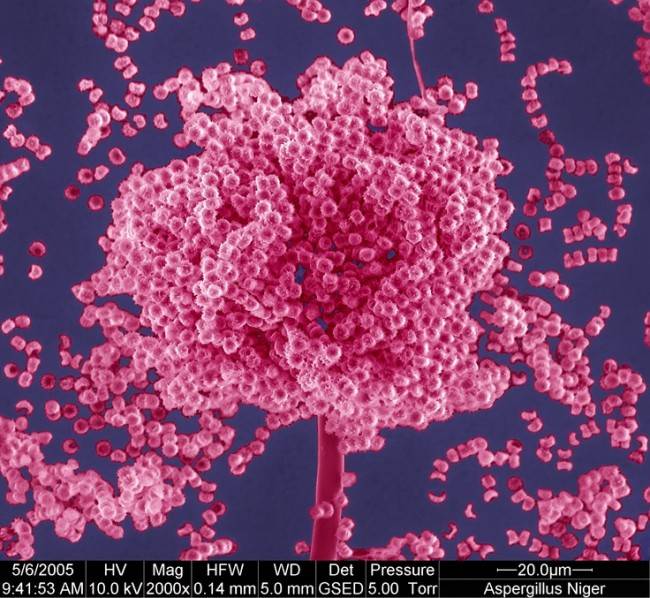
Black mold spores under an electron microscope with 2000x magnification (colors do not correspond to reality, present for clarity)
In order to start the process of getting rid of mold plaque, you just need to familiarize yourself with the list of probable diseases that are threatened by "communication" with the air filled with spores:
- Allergies and asthma.
- Dermatitis.
- Respiratory diseases: bronchitis and laryngitis.
A painful condition, similar to a cold or an allergic attack, may well be caused by fungal spores in the air.
- Skin diseases: dermatitis, eczema.
- Stomatitis, conjunctivitis and others.
Prevention of mold and mildew
- Control the humidity in the rooms - use a cooker hood when cooking, ventilate the room and leave the bathroom doors open. Use an air conditioner to dehumidify the air
- Maintain a constant temperature in rooms - insulate windows, use heating or space heaters
- Potted flowers - geraniums and violets, do not overflow
Conclusions from Tikhon: You can get rid of the fungus, the main thing in this matter is not to "start" the spread. Carry out preventive maintenance, ventilate the premises, maintain the temperature regime.
What are and types of mold
Microorganisms live on any surface. Under favorable conditions, the fungus begins to spread at a high speed, forming dark spots on the surface - mold:
- The appearance of the white variety is seen in potted flowers. Its appearance is associated with excessive soil moisture or improper feeding.
- A green type of fungus can develop on food.
- Black mold is considered widespread, which is often found on a concrete wall, wallpaper, boards.
- A blue fungus develops on a wooden surface.
- Rotting mold affects wood. The surface becomes brown or gray, cracks appear.
Mold is easy to detect, so you need to start solving the problem immediately.

